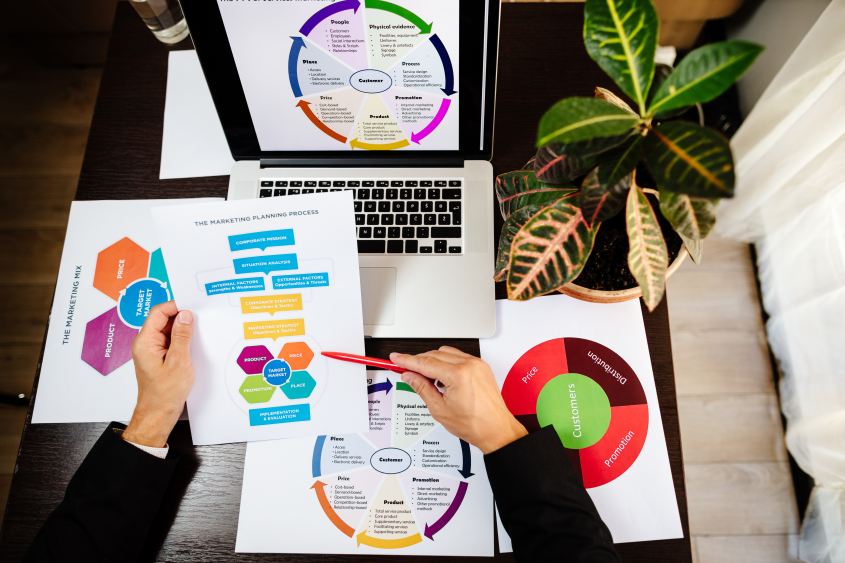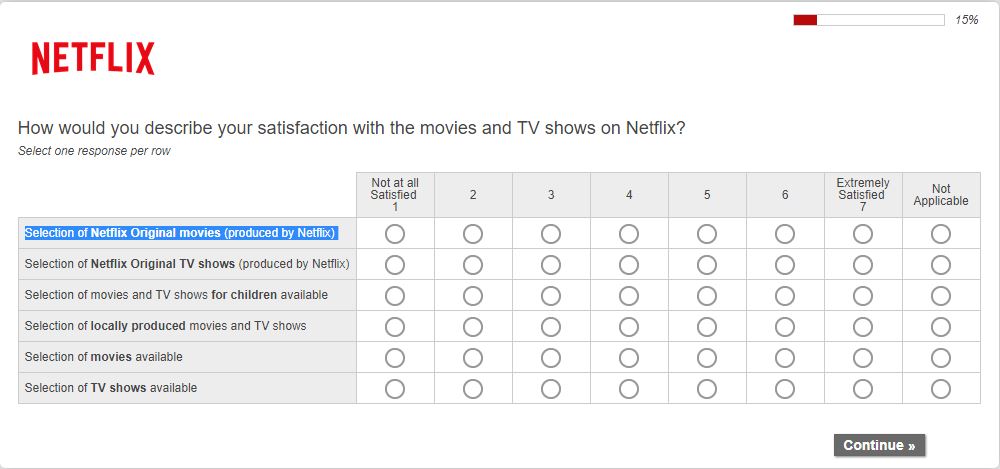Who drives a business? The customer, of course! In light of this, maintaining a happy relationship with your customers is a non-sequitur for any company. Yet, succeeding in customer relationships is emerging as the number one challenge in business development as more organizations compete for the same market share. Why is that?
Today, customers have more information, options, and the ability to simply switch to a competitor, owing to most products and services offering a month-on-month payment structure (which is especially true amongst SaaS businesses). This puts them in a superior position where they have all the authority. This means that unless your business focuses on customer-centricity, you may likely lose most of your revenue-making opportunities.
This is where the need for a customer success playbook arises.
A customer success playbook refers to step-by-step instructions detailing how and when to engage (or not!) with the specific activities in a customer’s lifecycle phase, such as onboarding new customers, addressing their concerns, and encouraging expansion.
In this blog, we will provide you with the details on building your business’s ultimate customer success playbook. But first, let’s understand the necessities of a customer success strategy.
Why is a Customer Success Strategy Necessary?
Customer success is one of the biggest driving factors behind business growth.
With increasing businesses switching to offering a subscription model instead of one-time deals to customers, products and services must demonstrate their worth before each contract renewal. Since consumers can nearly always choose from another competitor or version of your product or service, renewal depends on enabling them to continue to perceive value and success with your offering.
This is one of the main reasons a customer success strategy is necessary for businesses today. However, all companies benefit from successful client relationships. While improving customer experience can lead to clients having an overall positive outlook toward your brand, a customer success strategy, in comparison, does much more!
A robust customer success strategy ensures that customers derive the most value from your products and services, enhances lifetime value, and keeps them returning for repeat purchases. It also reduces customer churn by helping address customer concerns more effectively.
Besides this, a dedicated customer success strategy also incites customers to provide valuable insights into their preferences and pain points. This feedback can be instrumental in product development, enabling companies to innovate based on customer needs. Lastly, businesses can support customers in achieving their desired outcomes using a customer success playbook, thereby increasing overall satisfaction.
In short, customer success fuels intimate customer knowledge, leading to a longer, healthier customer lifecycle.

Do you need help unlocking the secrets of the customer success playbook?
Contact Growth Hackers
Types of Customer Success Playbooks
There are several kinds of customer success playbooks, each suited to a distinct stage of the customer journey or business circumstances.
Let’s examine the main categories of customer success playbooks and provide some examples:
1. Onboarding Playbook
This playbook optimizes the initial stages of a customer’s journey, from purchase to effective product use. It includes:
- Account Setup Guides: Instructions for account creation and software installation and configuration.
- Initial Training Sessions: Basic functionalities, key features, and best practices.
- Resource Checklist: Support documentation, tutorial videos, and user forums are available.
- Goal-setting SOPs: To assist users in establishing specific and attainable objectives for using the product.
- Routine Check-In SOPs: To answer any questions and offer more assistance.
- Input Method SOPs: To facilitate customer input regarding the onboarding process.
2. Renewal Playbook
This playbook aims to increase customer engagement and retention via cross-selling, upselling, and contract renewals. It includes:
- Renewal Tracking SOPs: Processes to monitor and track renewal dates and terms.
- Customer Health Monitoring Metrics: Indicators to assess customer satisfaction and engagement levels.
- Customized Renewal Proposals: Tailored renewal offers based on customer usage and needs.
- Upsell Identification SOPs: To identify opportunities for upselling based on customer behavior and needs.
- Value Reinforcement SOPs: To highlight product value and customer ROI.
- Incentives and Discounts: Special discounts to encourage renewals and upsells.
3. Escalation Management Playbook
This playbook effectively addresses customer complaints and difficulties. The main objectives here are reducing customer attrition and increasing satisfaction. It includes:
- Escalation Policies: Guidelines to identify problem scenarios and escalate specific issues.
- Roles and Responsibilities: Defined responsibilities for assigned team members involved in the escalation process.
- Escalation Tiers: Different escalation levels with criteria for moving issues to higher tiers as they evolve.
- Communication Protocols: Steps to communicate with customers and internal stakeholders.
- Resolution Timeframes: Target timelines for resolving escalated issues at each tier.
- Approval Processes: Authorization steps are used to make significant decisions during escalations.
4. Referral Playbook
This playbook aims to convert happy consumers into brand ambassadors who recommend the brand to others, helping the company attract and secure more customers. It includes:
- Referral Program Overview: Overview of the referral program’s goals, benefits, and rules.
- Target Audience Identification SOPs: Criteria for identifying customers likely to refer others.
- Incentive Structures: Terms and conditions for referrers and referees based on which they would be granted rewards or incentives.
- Referral Process Steps: Detailed set of steps for customers to submit referrals.
- Communication Templates: Email templates, direct messages, and social media post templates for customers to use while referring new clients.
- Tracking and Reporting Mechanisms: Tools and methods for tracking referrals and monitoring the success of the program.
5. Crisis Management Playbook
The main objective of this playbook is to assist businesses in effectively overcoming unexpected challenges or emergencies without compromising their relationship with clients. It includes:
- Crisis Identification and Classification SOPs: Criteria and guidelines to identify various forms of crisis scenarios and classify them.
- Roles and Responsibilities: Particular roles for crisis management team members consist of primary stakeholders and decision makers.
- Communication Plan: Detailed internal and external communication strategies, including templates for press releases, social media updates, and internal memos.
- Action Plan: Sequential roadmap to mitigate crisis in different scenarios, including first response actions to be taken and future plans.
- Crisis Communication Center SOPs: To establish a command center or hub for coordinating crisis response efforts.
- Post-Crisis Review and Analysis: Processes for reviewing the crisis response, identifying lessons learned, and updating the playbook to improve future responses.

6. Product Feedback Playbook
This playbook is centered on gathering and applying consumer feedback to enhance offerings iteratively. It includes:
- Feedback Collection Methods: Channels and tools for collecting feedback, including surveys, interviews, user testing, and feedback forms.
- Survey and Question Templates: Pre-designed templates for collecting structured and consistent feedback across different touchpoints.
- Feedback Analysis Processes: Techniques and tools for analyzing feedback to identify trends, common issues, and actionable insights.
- Feedback Management System: A centralized system for storing, organizing, and tracking feedback over time.
- Actionable Insights SOPs: To translate feedback into actionable product improvements or feature requests.
- Continuous Improvement Plan: Processes for regularly updating the product based on feedback and measuring the impact of changes.
Getting Started With a Customer Success Playbook
Creating any customer success playbook involves these common steps, no matter the type of situation you are creating it for. These include:
1. Mapping the Customer Journey
Creating a customer journey map is the first step in writing a successful customer success playbook. Visualize every turning point in a customer’s relationship with a product or service to help you identify potential and existing pain points.
This, in turn, helps businesses proactively develop solutions and strategies that guarantee customers feel supported and appreciated at every pain point. This in-depth customer experience knowledge can enable you to design employee activities specifically tailored to address customer concerns, improve product uptake, and cultivate enduring loyalty.

Now is the time to maximize the customer success playbook!
Work with Growth Hackers
2. Creating a Defined Objective
Establishing objectives for every playbook helps you measure employee performance and lets your staff know what’s expected of them. To do this effectively, customer success managers (CSMs) must know their purpose, vision, and the value they hope to provide. You can also get direct feedback from clients, learning about their goals, obstacles, and definitions of success.
These clear objectives work as the playbook’s compass, ensuring each tactic and activity is designed to provide the client with measurable, significant outcomes.
3. Customer Segmentation
Target customer segmentation makes it easier to customize a customer success playbook to meet various demands. Start by examining consumer data to identify trends in behavior, product use, industry, business size, and other pertinent variables. You can also conduct surveys with your existing customers to learn more about what drew them to your brand—here’s an example from Netflix!

Once you have identified these segments, you can develop tailored tactics for each to ensure the playbook’s interventions are appropriate for the given context and meet the needs of the individual segments. This detailed method guarantees that resources are allocated effectively, optimizing impact and promoting long-term growth. It also enhances the customer experience.
4. Creating Resources for Employee Understanding
Thanks to the resources in your customer success playbook, your staff can complete their work more quickly. To begin creating these resources, first determine the most frequent issues and queries that your customers have. From there, create various easily accessible pre-built content your staff members may access, like email templates, call scripts, competitor case studies, and a centralized internal information database.
You should also regularly ask staff members for feedback on them to ensure that the playbook stays relevant as situations adapt. You should also constantly look for new demands that call for additional tools or content in your playbook.
5. Assigning Team Member Roles
Lastly, roles for team members must be assigned if a customer success strategy is to be coherent and successful. Start by evaluating every team member’s experiences, skills, and strengths. Match these customer service abilities to the particular duties needed, like content creation, data interpretation, customer engagement, etc.
For example, a team member with strong communication abilities could lead client feedback sessions. Establish clear expectations for each role to avoid duplication of effort and to guarantee that every area of the playbook is covered.
BONUS: Simply making your playbook accessible to your customer service representatives will not help. It is crucial to monitor whether they are using it for problem-solving. To thoroughly survey a given sector, you can designate one CSM. Additionally, you may use KPIs and OKRs to help you assess the effectiveness of your playbook. You can also employ automated customer support systems to track customer success efforts.
Final Words on Creating a Comprehensive Customer Success Playbook
In a world where the customer is king, customer success playbooks are essential for developing a trusted and successful customer experience. You can surpass the competition and expand exponentially if you give your clients a memorable experience. The guidelines highlighted in a customer success playbook can help you achieve that.
To put it simply, you win when your consumer wins. It is time to give customers the same attention as marketing leads and sales prospects. A customer success playbook embodies the core of proactive customer engagement, guaranteeing that each exchange offers value and strengthens trust. Leverage one today to represent your company’s dedication to its customers in a way that keeps bringing more revenue for your business.
Growth Hackers is a leading customer experience (CX) agency helping businesses from all over the world grow. There is no fluff with Growth Hackers. We help entrepreneurs and business owners boost their business with the ultimate customer success playbook, increase their productivity, generate qualified leads, optimize their conversion rate, gather and analyze data analytics, acquire and retain users and increase sales. We go further than brand awareness and exposure. We make sure that the strategies we implement move the needle so your business grow, strive and succeed. If you too want your business to reach new heights, contact Growth Hackers today so we can discuss about your brand and create a custom growth plan for you. You’re just one click away to skyrocket your business.




